 Indians Archive
Indians Archive  Blast From The Past: The Relief Tandem of Don Mossi & Ray Narleski
Blast From The Past: The Relief Tandem of Don Mossi & Ray Narleski
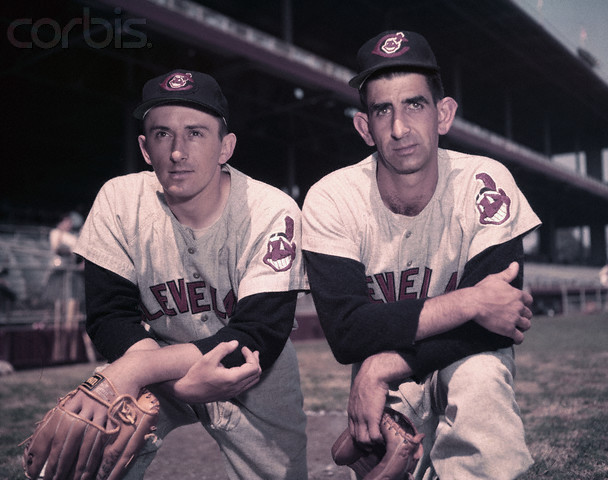 Tribe fans- what do the following ballplayers have in common: Greg Aquino, Rafael Betancourt, Vinnie Chulk, Matt Herges, Zach Jackson, Masa Kobayashi, Aaron Laffey, (inhaaaaaaaale), Jensen Lewis, Rafael Perez, Rich Rundles, Tony Sipp, Joe Smith, Jose Veras, Luis Vizcaino, and Kerry Wood?
Tribe fans- what do the following ballplayers have in common: Greg Aquino, Rafael Betancourt, Vinnie Chulk, Matt Herges, Zach Jackson, Masa Kobayashi, Aaron Laffey, (inhaaaaaaaale), Jensen Lewis, Rafael Perez, Rich Rundles, Tony Sipp, Joe Smith, Jose Veras, Luis Vizcaino, and Kerry Wood?
You say that each player has resembled a receptacle for a mixture of flammable liquid hydrocarbons derived chiefly from crude petroleum and used principally as a fuel for internal-combustion engines?
Hm, maybe, but you also know: they each pitched in relief for the 2009 Cleveland Indians. The turnover is a pretty dramatic illustration of the volatility (pun) of that portion of a major league team. (Of course, there's been turnover at every level of the Indians organization since then, including manager and GM - and even extending to this year's hitting coach!)
The emphasis on the relief corps as a strength of a major league team originated with the Tribe. According to their contemporaries, Don Mossi and Ray Narleski comprised the best relief pitching combo in the history of baseball when they played for the Cleveland Indians from 1954 through 1958.
Under manager Al Lopez, the 1950s Cleveland Indians were a perennial American League contender. However, they were frustrated on an almost yearly basis by the New York Yankees. From 1951 through 1956, the Tribe fell short of the Yankees in five of those six years, by an average of about five games.
1954 was the exception. Cleveland's star-studded roster boasted AL home run and RBI champion Larry Doby, slugger Al Rosen, and AL batting champ Bobby Avila (Ted Williams had a slightly higher average, but had missed time due to a broken collarbone and then a lung infection and did not have enough at-bats to qualify for the batting title). Cleveland won an AL-record 111 games that year (more than the fabled Yankees of 1927). Although the Yankees did win 103 in '54, that was merely enough to finish eight games behind the Tribe.
The 1954 Tribe also had what may have been the greatest pitching staff in baseball history. The starters:
Early Wynn (23-11, 2.73 ERA)
Mike Garcia (19-8, 2.64 ERA)
Bob Lemon (23-7, 2.72 ERA)
Art Houtteman (15-7, 3.35 ERA)
Bob Feller (13-3, 3.09 ERA)
For the bullpen, lefty Hal Newhouser had been signed prior to the season after his long Hall of Fame career with the Detroit Tigers had ended. Newhouser, later a baseball scout who is credited with discovering Derek Jeter, finished 7-2 with a 2.54 ERA in 1954. Also that Spring, minor league manager Birdie Tebbetts was insistent with Tribe manager Al Lopez: he had to take two impressive rookies north with him to start the year as well.
Don Mossi and Ray Narleski were both 25 year old starting pitchers. Since there was no room for them on that historically good starting staff, Lopez began to rely on them at the back of the bullpen (the Indians were so loaded with pitching that still waiting his turn was 1955 Rookie of the Year and 16 game winner Herb Score).
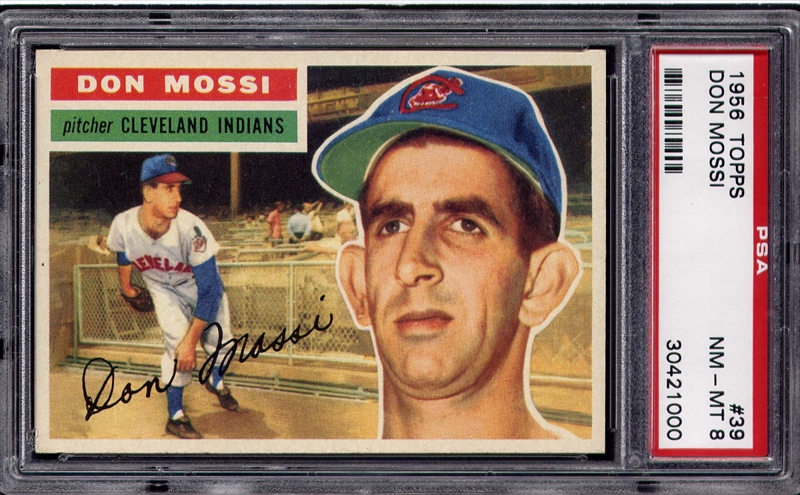 Don Mossi was a very laid-back left-hander with an arm that was so crooked, he could not straighten it. Doctors had told him he must have had an arm injury in the past, but he had no memory of one. He had been very wild in the minors, but boasted a tremendous strikeout-to-walk ratio (932/385) in the majors. Mossi credited the improvement to Mel Harder. The pitching coach suggested he change from a two-finger to a three-finger grip on the baseball. Good for the Tribe, and good for Don Mossi: as he approached his fifth year with the Indians‘ organization in 1954, he knew he would either make the big club or be waived, per the rules of MLB at the time. He actually planned to retire and "get a job" if he didn't make the big leagues in '54.
Don Mossi was a very laid-back left-hander with an arm that was so crooked, he could not straighten it. Doctors had told him he must have had an arm injury in the past, but he had no memory of one. He had been very wild in the minors, but boasted a tremendous strikeout-to-walk ratio (932/385) in the majors. Mossi credited the improvement to Mel Harder. The pitching coach suggested he change from a two-finger to a three-finger grip on the baseball. Good for the Tribe, and good for Don Mossi: as he approached his fifth year with the Indians‘ organization in 1954, he knew he would either make the big club or be waived, per the rules of MLB at the time. He actually planned to retire and "get a job" if he didn't make the big leagues in '54.
So Mossi's lasting reputation was that he threw with pinpoint control. However, he was noted by Al Lopez as being "sneaky fast", and in 1956 The Sporting News recognized him as having one of the best fastballs in the American League. His main pitch was the curveball, though, and Al Rosen was known to exclaim that it "never stops curving." He played with pain through most of his career, but lasted several years in Baseball. He said when it started to hurt, he would "throw harder."
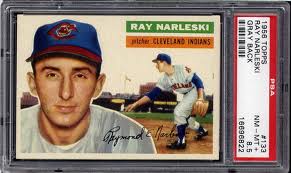 Ray Narleski was a right-hander with an upper-90s fastball. He prided himself on battling hitters, "fighting them all the way." "I had a rising fastball that I could throw 95-100 miles per hour. The batters would hit underneath it and pop it up. I had a knuckle curve in the minors, but Bill Norman, one of my managers, said to forget it. I had a slider, too. Mel Harder taught me how to throw a curve later on. He also helped me with my motion." (Splendor on the Diamond, Rich Westcott, 2000)
Ray Narleski was a right-hander with an upper-90s fastball. He prided himself on battling hitters, "fighting them all the way." "I had a rising fastball that I could throw 95-100 miles per hour. The batters would hit underneath it and pop it up. I had a knuckle curve in the minors, but Bill Norman, one of my managers, said to forget it. I had a slider, too. Mel Harder taught me how to throw a curve later on. He also helped me with my motion." (Splendor on the Diamond, Rich Westcott, 2000)
In 1954, Don Mossi finished 6-1 and 1.94 while Ray Narleski went 3-3, 2.22. Mossi's mental makeup reflected a tendency to take adversity and pressure in stride. He remained calm and poised. In contrast, Narleski was a type-A personality. He stomped into games with an aggressive attitude. Though opposites in some ways, they were best of friends who roomed together on the road.
Just how new the relief emphasis was to Baseball is reflected in how Lopez would summon them into a game. First of all, they normally would enter with men on base (under the you-better-not-mess-this-up glare from the prideful veteran starter who was not accustomed to getting pulled so quickly). Lopez eventually took to signaling the bullpen by raising the arm which matched the arm the reliever threw with. However, he originally had player-specific signs he used to summon the tandem. For Narleski, Lopez would draw an imaginary "N" in the air as he walked to the mound to remove the starter. For Mossi, he would cup his hands on the sides of his head and wave back and forth- in reference to Mossi's huge ears! Mossi later professed it did not bother him.
Mossi and Narleski. They are still mentioned in the same breath, and players such as Herb Score considered them the best lefty-righty combo they'd ever seen. They anchored the Tribe bullpen for two more years, and in 1957, they each were given at least some spot starts with the sub-.500 Tribe. Mossi went 11-10 and Narleski finished 11-5. In 1958, they were back in the bully, as Mudcat Grant and Cal McLish were inserted into their starting roles. After the 1958 season, they were both included in the deal with the Detroit Tigers which brought Billy Martin to Cleveland. The General Manager who swung the deal was Frank "Trader" Lane. His infamous dismantling of the Cleveland Indians during that era also featured the dealing of Rocky Colavito- blamed by many to have resulted in the "curse" which keeps the club from winning a championship. Lane explained that the duo had not won many games recently; others were sure the big reason he traded them was their repeated request to start- and thereby earn perhaps three times the salary (Narleski was outspoken- and remained so long into retirement).
 A brief mention of their catcher- Jim Hegan. The father of ex-player and current Tribe announcer Mike Hegan, the Tribe's catcher of the '40s and '50s was considered the best catcher of the mid-20th century. His bat was adequate, but in his ability in calling a game, and of catching and throwing, he had no peer. He was said to be able to react to a foul ball by running to the spot it would fall to, and not have to waste time looking for it until he arrived near that spot. And all of those Hall of Fame pitchers who played for the Tribe trusted he would call the right pitch in a tough spot.
A brief mention of their catcher- Jim Hegan. The father of ex-player and current Tribe announcer Mike Hegan, the Tribe's catcher of the '40s and '50s was considered the best catcher of the mid-20th century. His bat was adequate, but in his ability in calling a game, and of catching and throwing, he had no peer. He was said to be able to react to a foul ball by running to the spot it would fall to, and not have to waste time looking for it until he arrived near that spot. And all of those Hall of Fame pitchers who played for the Tribe trusted he would call the right pitch in a tough spot.
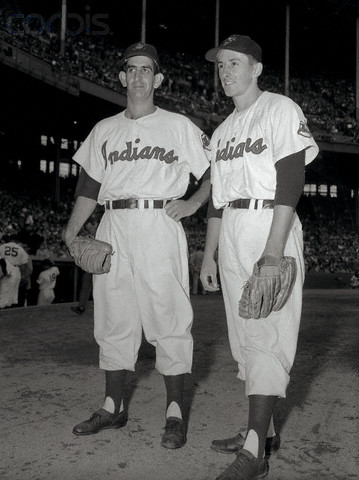 Shortly after being dealt by Trader Lane, Ray Narleski developed shoulder problems and was close to being finished as a pitcher. Don Mossi had several productive years with Detroit, the White Sox (reuniting with Al Lopez), and Charlie Finley's Kansas City A's. He'd become a starting pitcher for much of his post-Cleveland career. Variously nicknamed "The Sphinx", "Ears", or "The Loving Cup", Mossi retired in 1965 because "My kids were getting older, my arm hurt, and a new attitude was coming into the game." (www.thediamondangle.com/archive/oct01/mossi.html, James Floto and Randy Rosenblatt, 1995)
Shortly after being dealt by Trader Lane, Ray Narleski developed shoulder problems and was close to being finished as a pitcher. Don Mossi had several productive years with Detroit, the White Sox (reuniting with Al Lopez), and Charlie Finley's Kansas City A's. He'd become a starting pitcher for much of his post-Cleveland career. Variously nicknamed "The Sphinx", "Ears", or "The Loving Cup", Mossi retired in 1965 because "My kids were getting older, my arm hurt, and a new attitude was coming into the game." (www.thediamondangle.com/archive/oct01/mossi.html, James Floto and Randy Rosenblatt, 1995)
"Mossi and Narleski" only lasted 5 years with the Indians. But they were a matched set, even with regard to the way they were sent away from the team. And it all began on one of the finest pitching staffs, on one of the best baseball teams in history.
Thank you for reading. Next week: Blast From The Past: Wayne Garland.
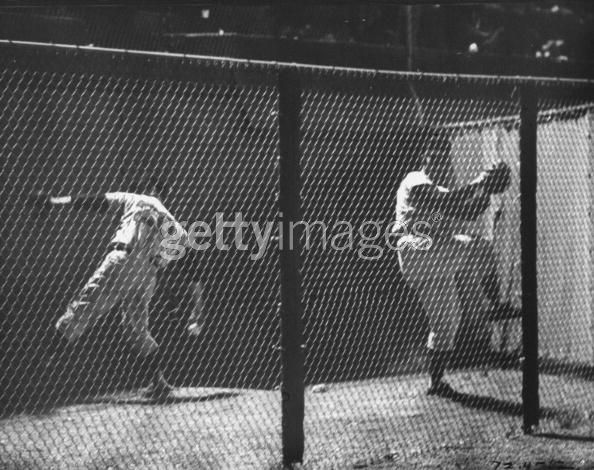
- NBA Announces 2013-2014 Schedule
- Browns Ink Sharknado
- Sharknado A No-Show For Rookie Camp
- Trent Richardson Out Until Training Camp
- Browns Sign Brandon Jackson
- Carrasco Suspended Eight Games
- Browns Add to Wide Receiver Depth with David Nelson
- Browns Need to Learn from Past Draft Mistakes
- Browns Release Chris Gocong and Usama Young
- Browns Missing on Grimes Disappointing, But Not The End
The TCF Forums
- Chris Grant's first 3 drafts
Kingpin74 (Tuesday, January 21 2014 10:13 AM) - The 2014 Offseason Thread
googleeph2 (Tuesday, January 21 2014 9:36 AM) - 2015 Recruiting
furls (Tuesday, January 21 2014 6:57 AM) - Mike Brown
YahooFanChicago (Monday, January 20 2014 11:15 PM) - Movies coming out
HoodooMan (Monday, January 20 2014 9:34 PM) - 2014 Hoops Hockey Hijinx
jpd1224 (Monday, January 20 2014 4:44 PM) - 2014 Recruiting
jclvd_23 (Monday, January 20 2014 2:26 PM) - Wish List - #4 Pick
Hikohadon (Monday, January 20 2014 1:26 PM) - Official- Browns Coach Search/Rumors
OldDawg (Sunday, January 19 2014 6:48 PM) - #1 overall pick Anthony Bennett
TouchEmAllTime (Sunday, January 19 2014 1:28 PM)



